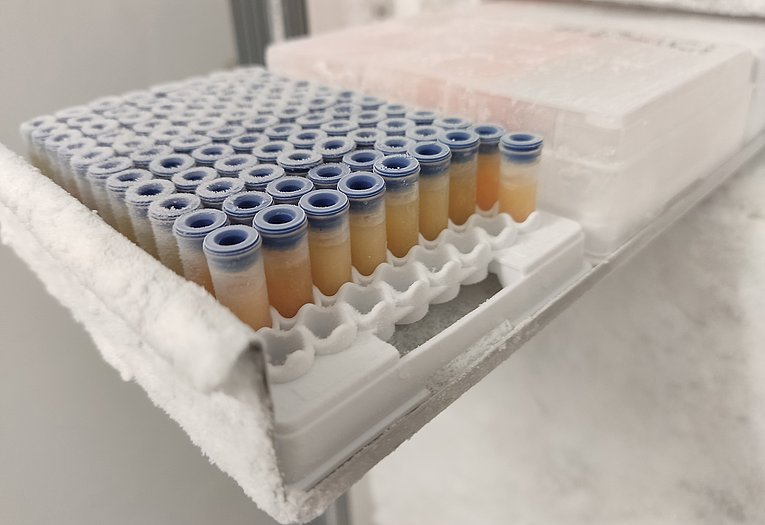Central Biobank Erlangen (CeBE)
The Biobank of the Radiation Oncology Department is a founding member of the Central Biobank Erlangen (CeBE). Further information on the central biobank of the University Hospital Erlangen can be found here.

Biobank of the Departement of Radiation Oncology
In 2014, the Department of Radiation Oncology has set up its own biobank.Our biobank was built due to the need for a secure preservation and storage of the biomaterial from patients that is generated in clinical trials, which are performed at our clinic. This biomaterial includes serum and plasma, but also (depending on the clinical trial) cell lysates, RNA, DNA, PBMCs or stool and saliva samples for microbiome analyses. These samples are available for subsequent, study-related analyses or as a reserve sample. Further, our biobank also serves for the preservation of biomaterial from multicentric clinical trials, which have either been initiated at the Department of Radiation Oncology or for which our clinic is responsible for the central sample storage.
For the preservation of the biomaterial several ultra-deep freezers are available at our Department, in which the material is frozen as defined aliquots. For that purpose, we aliquot the samples in special tubes that are highly resistant and have a unique 2D barcode on their bottom. The laboratory for cellular and molecular radiobiology is available for the procession of the biomaterial. The cataloging and administration of the samples is performed with a software program of Abbott Laboratories under the administration of the MIK of Uniklinikum Erlangen.
Objectives of the Biobank at the Department of Radiation Oncology
Within the scope of their informed consent, the patients give us the permission to use their biomaterial for different research projects. Thus, our biobank follows the goals below:
- Prospective collection of samples for further study-specific use
- Retrospective creation of collectives for:
- Scientists at the Department of Radiation Oncology
- Scientists from participating study centers
- Cooperation partners of the Department of Radiation Oncology
